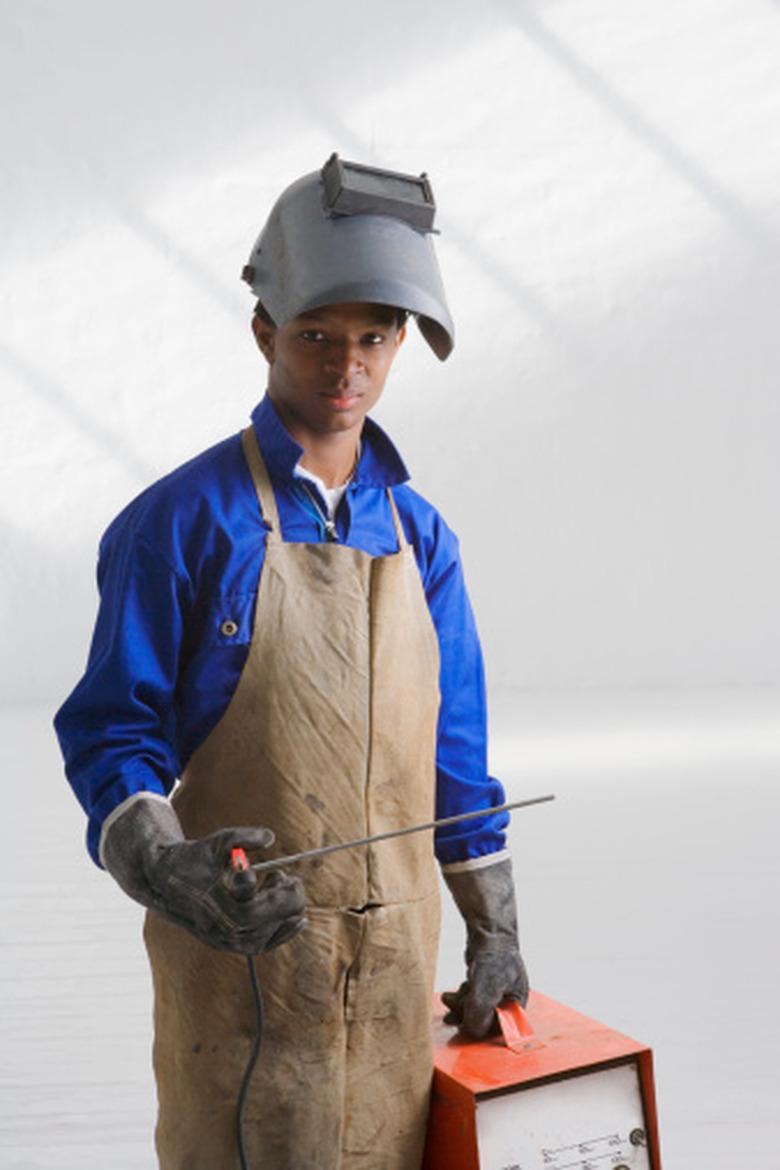What Is The Difference Between A 6011 Welding Rod & 6013 Welding Rod?
Arc welding is used in construction, farming, mining and at sea. Regardless of what you're welding on, or where you are doing it, you need electrodes, known as welding rods, to complete the welding process. The welding process is achieved when electricity passes through the electrode in to the metal being welded, creating an electrical arc that reaches temperatures of 5,000° Celsius. The electrical arc melts the electrode together with the base metal completing the welding process. This is true of both the 6011 electrode and the 6013 electrode.
Polarity
The 6011 and 6013 electrodes can be used on both alternating and direct currents. Alternating current is an electrical current that changes direction of flow, while direct current flows steadily in one direction. For this reason direct current is often used when more heat is needed on the material being welded, and alternating current is used when less heat is needed on the material being welded. The most common welding machines sold are alternating current only.
Tensile Strength
Tensile strength is the measurement of resistance a material has to longitudinal stress. It is the maximum amount of force a material can take without breaking. The tensile strength of a welding rod can be determined by the first two numbers in the electrode's name. In this case that is 60, so the maximum tensile strength of the 6011 and 6013 electrode is 60,000 psi.
Penetration
Penetration is the distance below the surface that metal is fused together from the heat created from the electrical arc between the electrode and the base metal. The 6013 electrode is best used for light to medium penetration on a thin metal, or sheet metal. The 6011 electrode offers more penetration than the 6013 so you can weld a slightly thicker material.
Uses
The 6013 electrode is often used in situations that involve irregular or short welds that require a change in position because it provides a very stable arc and a smooth finish. The 6011 electrode is often the better choice on painted, dirty or greasy surfaces when appearance is not as important and more penetration is needed.
